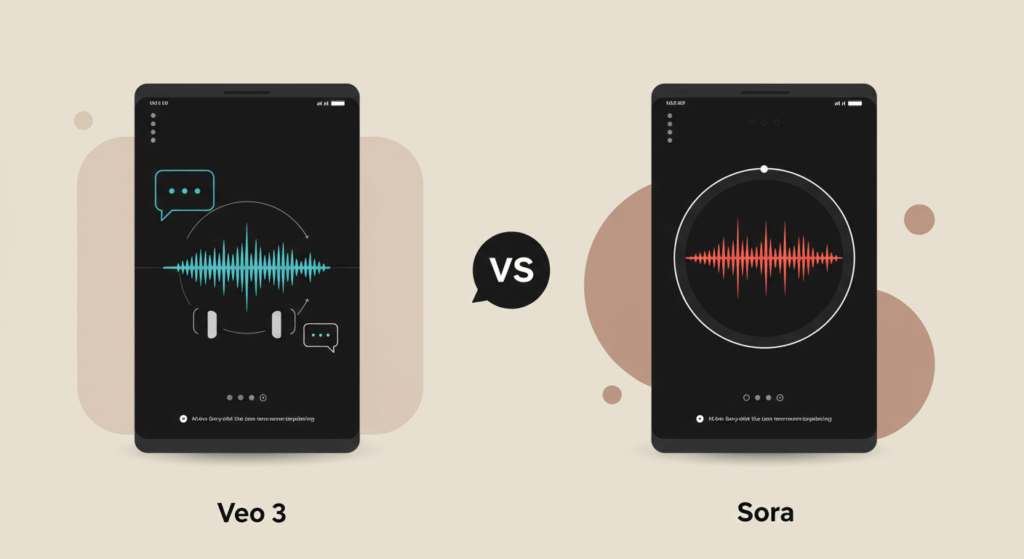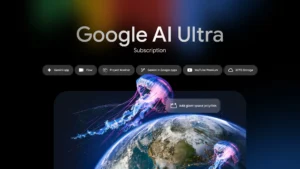Google has officially unveiled Veo 3, its most advanced AI video generator yet—designed to create high-quality videos with synchronized audio, including dialogue and sound effects. As a direct competitor to OpenAI’s Sora, Veo 3 raises the bar by adding realistic, dynamic audio generation into the mix.
Launched on Tuesday, May 14, 2025, Veo 3 is now available exclusively to U.S. users subscribed to Google’s new Ultra plan, priced at $249.99/month, and enterprise clients on Vertex AI.
What is Google Veo 3?
Veo 3 is Google’s latest text-to-video AI model developed by Google DeepMind. It not only transforms text and image prompts into cinematic-quality videos, but also includes:
- Natural dialogue between characters
- Animal sounds and ambient audio
- Physics-aware motion
- Accurate lip-syncing
“Veo 3 excels from text and image prompting to real-world physics and accurate lip syncing,” said Eli Collins, Google DeepMind’s Product VP, in an official blog post.
This makes Veo 3 one of the first AI models to combine video and audio generation natively, significantly narrowing the gap between synthetic content and real-world footage.
Veo 3 vs OpenAI Sora: What’s New?

While OpenAI’s Sora has impressed users with stunning video quality, it lacks native audio generation—a major feature in Google Veo 3.
| Feature | Veo 3 | OpenAI Sora |
|---|---|---|
| Video Generation | ✅ Yes | ✅ Yes |
| Audio Generation | ✅ Yes (Dialogue, FX) | ❌ No |
| Lip Sync Accuracy | ✅ High | ❌ Limited |
| Physics Simulation | ✅ Advanced | ✅ Yes |
| Availability | Ultra Plan / Vertex AI | Limited Research Use |
Veo 3 Pricing and Access
Google is targeting AI power users and professionals with a high-end Ultra subscription plan:
- Monthly Cost: $249.99
- Access Includes: Veo 3, Imagen 4, Flow, Gemini, Vertex AI integrations
- Available in: United States only (as of launch)
For businesses and developers, Veo 3 is also accessible via Google’s Vertex AI platform, enabling seamless API integrations and commercial-scale use.
Key Features of Veo 3
Here’s what makes Veo 3 stand out in the generative AI video space:
Integrated Audio & Dialogue
- Generate realistic character conversations
- Add natural ambient sounds and animal effects
- Lip-sync with character animations
Text + Image Prompting
- Turn simple text or image inputs into detailed video scenes
- Supports multimodal input for complex storytelling
Physics-Based Animations
- Real-world object motion and interactions
- Smooth camera transitions and cinematic movement
Object Editing
- Add or remove objects in existing videos using text prompts
- This feature was first introduced in Veo 2, now enhanced in Veo 3
Imagen 4 & Flow: New Additions
Alongside Veo 3, Google also launched Imagen 4, a next-gen image generation model that promises ultra-sharp, highly accurate visuals from user prompts. This addresses past issues with Imagen 3, which was criticized for historical inaccuracies.
Additionally, Google unveiled Flow, a new tool that helps users create cinematic video sequences by describing:
- Locations
- Camera angles
- Shot preferences
- Scene transitions
Flow will be available via Gemini, Whisk, Vertex AI, and Workspace tools, making it useful for filmmakers, marketers, and content creators.
Lyria 2 & YouTube Shorts Integration
As part of its growing creative AI toolkit, Google is also rolling out:
- Lyria 2, a music-generation AI for creators
- Now accessible to YouTube Shorts users and Vertex AI businesses
This allows seamless background music generation for short videos, further enhancing Google’s suite of creative AI tools.
A Note on Google’s AI Track Record
While Google is moving fast in AI, its past missteps—such as Imagen 3’s historical inaccuracies—have raised concerns. Co-founder Sergey Brin acknowledged the issue, citing a lack of proper testing.
This time, however, Google claims to have conducted extensive internal evaluations for Veo 3 and Imagen 4, promising more responsible and accurate outputs.
Final Thoughts
With the launch of Veo 3, Google has taken a major leap ahead in generative video and audio AI. Its ability to blend cinematic visuals, lifelike audio, and lip-synced dialogue gives it a unique edge over current competitors like OpenAI’s Sora.
For creators, developers, and AI professionals, this tool could redefine what’s possible with text-to-video generation—especially as multimodal content becomes the new standard in storytelling.



